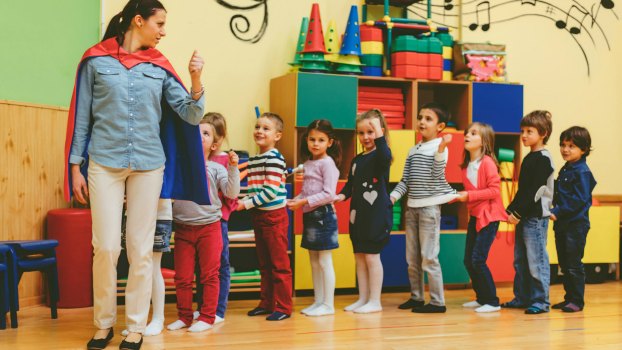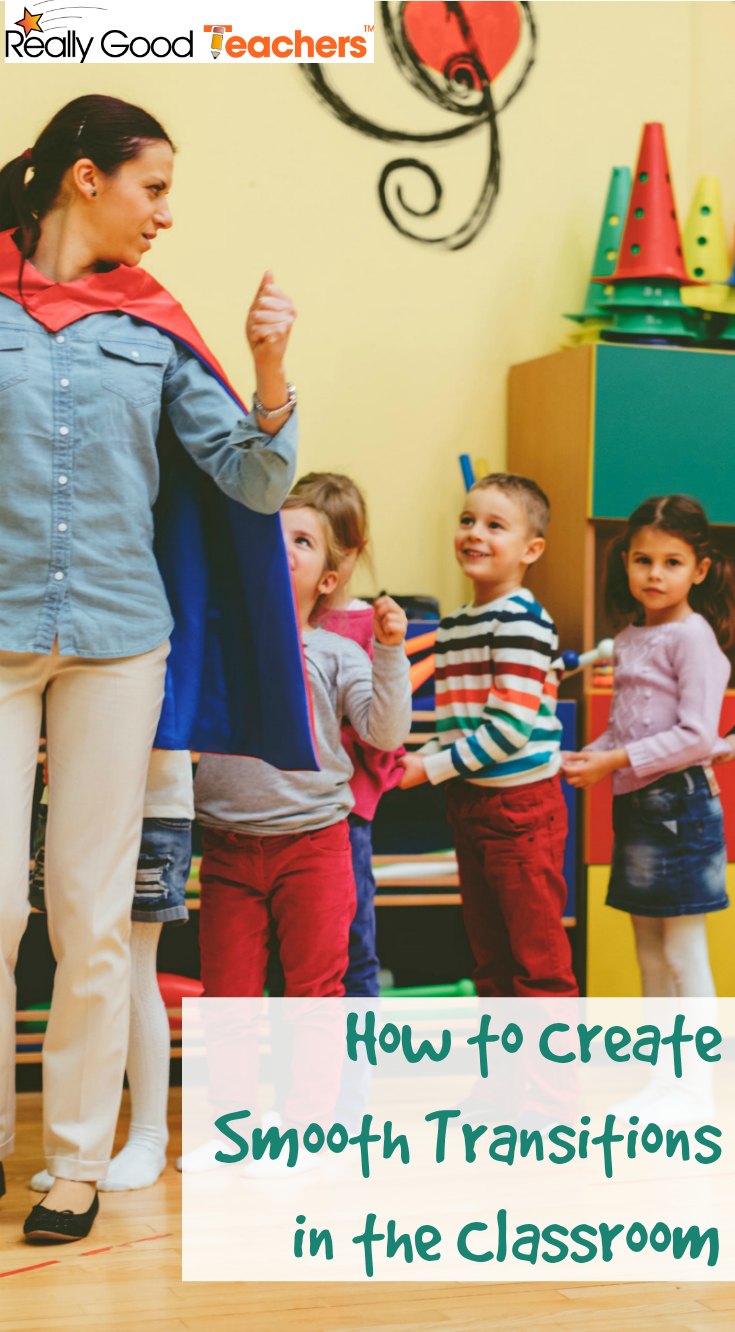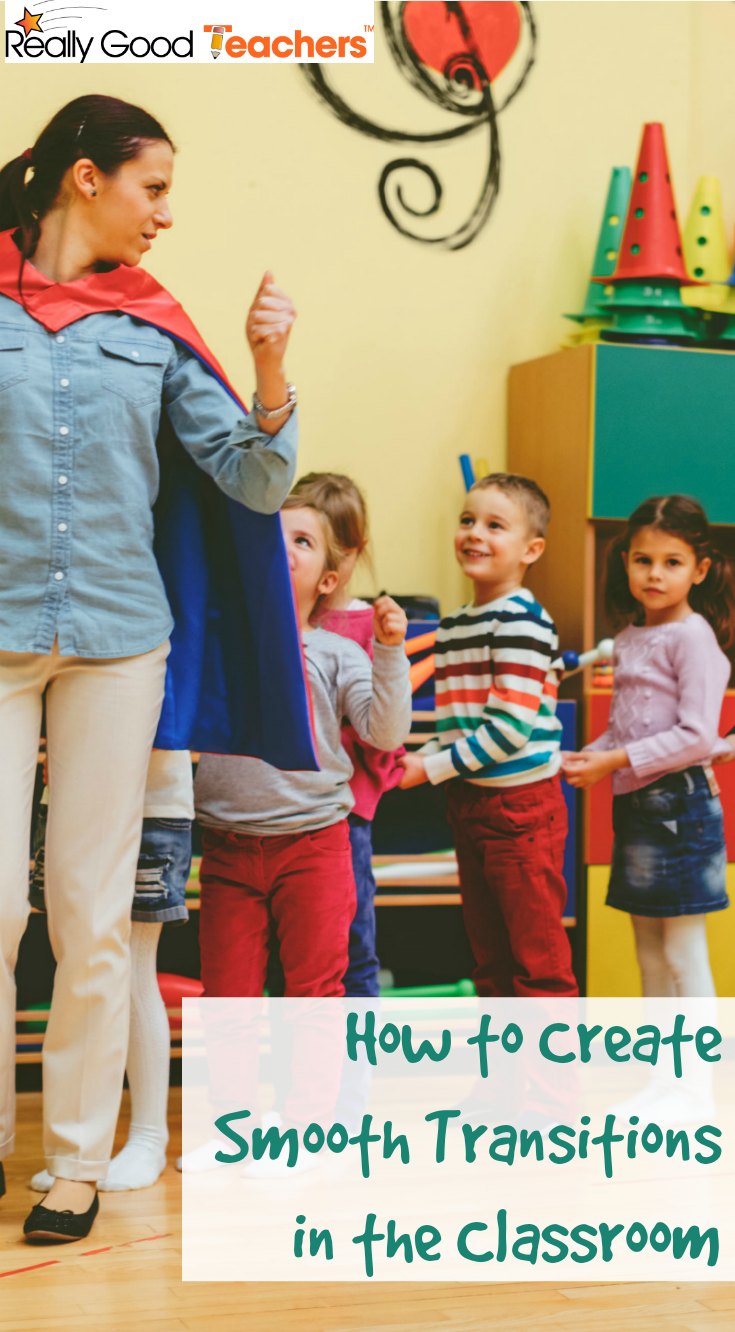
Moving children from one activity to the next can be one of the most challenging aspects of teaching. Both new and veteran teachers often struggle with finding new ways to manage transition time. “This is my toughest area in teaching!” admits Nikki C., and she is not alone. What works for some classes does not work others, which creates a dilemma for teachers who are trying to develop a good transition time routine.
Creating Smooth Transitions
We asked teachers what they do to facilitate smooth transitions in their classroom throughout the day. While there were many answers, there was a common theme throughout. That theme was expectations. Teachers who tend to have good transition time skills, also expect their students to switch activities in an appropriate way. “[It takes] well rehearsed routines and an expectation of no wasted time,” explains Deborah A. When you expect children to behave in a certain way, and demonstrate and practice it, there is little room for misunderstandings about how they are expected to act. They know what to do and how to do it.
It sounds simple, but what are those well rehearsed routines? For some teachers it is a visual clue that alerts students to finish up what they are doing. “I give a 2 minute warning by flashing the lights,” says Stacey T. Others use visual reminders of the day’s events to help with transitions. “I write on the board what the planned agenda is for the class period. As part of my opening routine, I explain what we have planned for the reading/language arts block. We may accomplish all the tasks or some of the tasks. We may go in order or skip around. The students have a preview of what is planned,” explains Dawn R.
Adding Music and Movement
Other teachers like to add music and movement into their transition time routines. “I use chants, poems, songs, and clear expectations,” Teri says. Tricia N. likes to add patterns to her transition time. “My favorite activity is to say ‘clap once if you can hear me’, ‘clap twice if you can hear me’, etc. until everyone is listening,” she explains. “I also have the kids do a simple physical activity like touching their toes five times. That helps get the energy out. I also do “sh sh shshsh” in a pattern. They then repeat it back to me.”
While movement may include music, it does not always have to. “I let students get a drink between activities,” says Buena K. “They need the hydration and it gives them a chance to move around and socialize a bit before moving on to the next activity.” 7th Grade Teacher, Peggy H. agrees that movement is a good thing. “‘Brain breaks’ are important especially for middle school students who have parts of their anatomy that fall asleep easily. Getting students up and moving, even if it’s only to take an assignment to a specific place to turn it in, allows them the opportunity to get up and move,” she explains. “Giving specific instructions for behavior expectations during this movement is important so that students don’t take advantage of it, but the movement really helps keep the momentum in a lesson.”
Carefully Curated Cues
Auditory cues are a tried and true method, so it comes as no surprise that many teachers recommend them. “I use a bell or a slide whistle,” says Kyla T. “I have them sit in a semi-circle for instruction time and then when I am finished we glide right into practicing what we learned. Once finished, we have a clean up time at the sound of the bell or whistle.”
“I am fortunate to have separate areas of the room for math, science and literacy so in going from one activity to another I’ll ask students to ‘take care of their needs and meet me on the (color) carpet in 3 minutes,'” explains Julianne. “For some this means a drink of water or a bathroom break, for others it means quiet conversation with a friend. When I count down from 5 to 0, students know they are to be ready to begin.”
Whichever method of transition is chosen, it is clear that the main factor for success is expecting the best from students. Expecting good behavior and giving them clear examples of what that means, is the quickest way to gain the upper hand on transition time management. With smooth transitions in place, the day will be less stressful for both teacher and students.
Questions to Consider:
- What are my expectations for transition time?
- How can I help my students gain a clear understanding of how to meet those expectations?
- How do I, personally, handle transitions and how does that influence my students?
Additional Resources:
Transition Time: Let’s Do Something Different by Jean Feldman
Wonderful Rooms Where Kids Can Bloom by Jean Feldman
Quick and Lively Classroom Activities by Linda Nason McElherne

